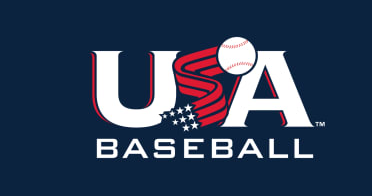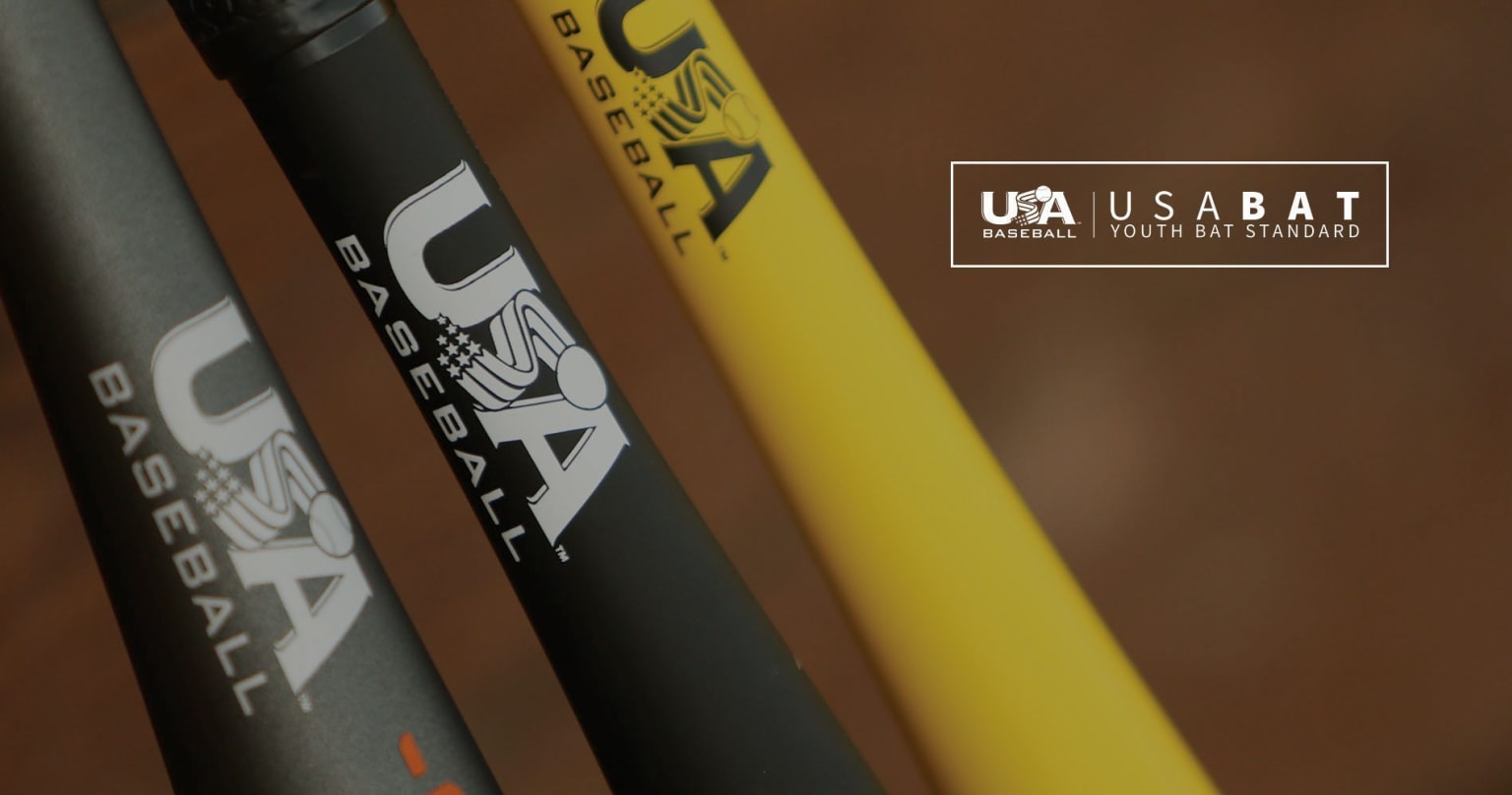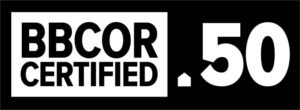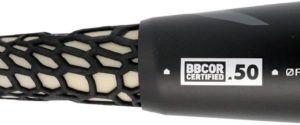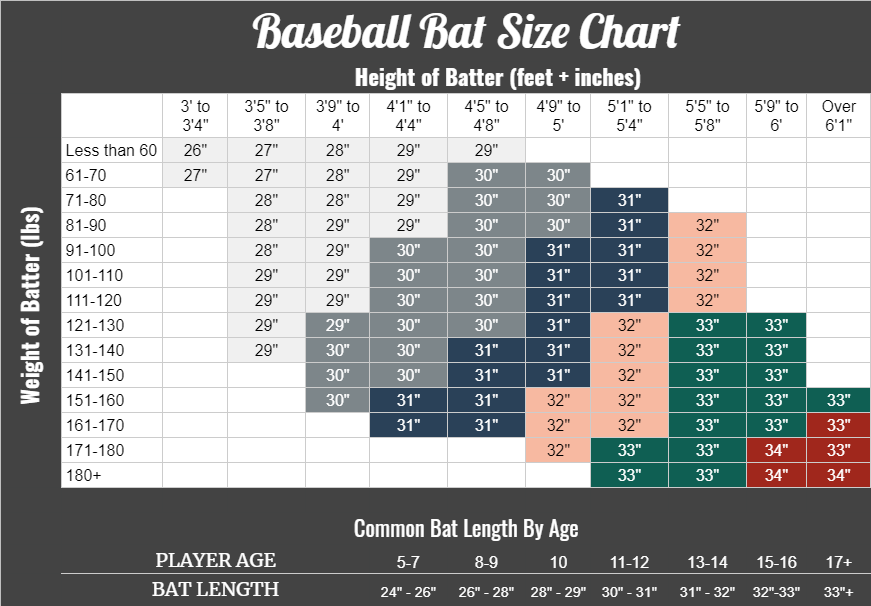A bat is a key piece of equipment that can impact the game of every player. Choosing the right bat can be vital in helping any player excel on the field.
With so many different choices of brands, materials, and sizes it can be easy to get lost in the allure of brand-name products and fancy-sounding bat technology. This guide will show you how to choose the right bat, regardless of the price tag or the logo on the bat.
Jump to a section:
Bat Anatomy
Before choosing the best bat for you, it is important to understand the different sections that make up a baseball bat. From bottom to top, the five notable sections of every bat include the knob, grip, taper, barrel, and end cap.
- Knob – The flared bottom of the bat that helps batters to keep their hands in place.
- Grip – The skinny portion of the bat players hold when swinging.
- Taper – The portion of the bat where the bat begins to grow wider, connecting the grip to the barrel.
- Barrel – The widest part of the bat, where every player is looking to make contact with the ball.
- End Cap – The top of the bat. This part of the bat is often overlooked, but the end cap can affect bat control, barrel flex, and even the bat sound.
Knowing the different sections of the bat will help you identify critical measurements when choosing your bat and make you sound more knowledgeable when bragging about your new purchase.
Age and Regulations
It is important to know the regulations and restrictions that you have to work with to meet your league rules. While you should check your league's website for specific restrictions, most leagues will follow the guidelines below.
Ages 4-6
Tee Ball
Ages 4 to 6 typically should be using a tee ball bat. These bats have large barrels and are incredibly lightweight. They generally are made from aluminum and are made specifically for hitting off of a tee.
Ages 7-13
Bat Standards: USA Baseball & United States Specialty Sports Association (USSSA)
The two major governing bodies for ages 7-13 are USA Baseball or United States Specialty Sports Association (USSSA).
When deciding between the two, you will first want to check with your league’s requirements and start there.
USA primarily is used for the following leagues:
- AABC
- Babe Ruth Baseball/Cal Ripken Baseball
- Dixie Youth Baseball
- Dixie Boys Baseball
- Little League Baseball
- PONY Baseball
USSSA is used primarily for USSSA baseball tournaments that are not associated with any USA leagues.
USA Baseball
USA Baseball regulations have been adopted by notable leagues like Little League, Pony League, Babe Ruth, and several others.
USA Baseball has no restrictions in weight drop (calculated by bat length [inches] – bat weight [ounces]) and limits barrel size between 2 ¼" and 2 5/8". It's suggested that younger players start with a 2 ¼" and move to a 2 5/8" as they grow older.
The regulations vary slightly by age and event, so you should check their website for the most up-to-date information.
You can recognize a USA Baseball certified bat by identifying their logo either on the knob, taper, or end cap of the bat.
USSSA- United States Specialty Sports Association
USSSA bat regulations vary significantly in weight drop and diameter and typically govern leagues for ages 11-13 and senior clubs.
significantly in weight drop and diameter and typically govern leagues for ages 11-13 and senior clubs.
You can check the USSSA website for specifics on your age group, and like USA Baseball, USSSA bats can be recognized by locating the USSSA logo on the knob, taper, or end cap of the bat. Another thing to look for- the USSSA identifying label will typically be red.
High School & College
BBCOR- Batted Ball Coefficient of Restitution
BBCOR was created for overall player safety, especially for pitchers, as well as making sure that the sport stays fair from bat to bat. This was first needed when there was an arms race in bat technology that led to increasingly powerful bats, creating a dramatic impact when competing.
The BBCOR rules are the most strict of the three regulating bodies and are mostly used for high school and college leagues. BBCOR bats have a maximum drop weight of -3 and a maximum diameter of 2 5/8".
BBCOR’s regulations are more stringent to ensure that no player gets an unfair advantage with the “trampoline” effect. This common phenomenon happens when a baseball hits an aluminum bat and reacts like an object hitting a trampoline and bouncing back off it. Drop weights and diameters below the standard sizes control the amount of energy lost when a player makes contact with the ball. This controls the "trampoline" effect so that no player gets an unfair advantage.
The Washington State University Sports Science Laboratory is in charge of making sure all bats meet the BBCOR standard. Each bat goes through the ABI test protocol to then become NCAA certified.
BBCOR certified bats are again identified by their logo on the knob or the taper and are typically blue.
How To Size a Bat
At this point, you may be wondering, "what size bat do I need?" One of the most important things to consider and the best place to start is the bat length.
Bat Length
Some players think that a longer bat means more plate coverage. However, if a bat is too long, it could negatively affect bat speed or swing mechanics, meaning you can’t catch up to heaters or may even potentially injure yourself.
On the other hand, with a bat that is too short, batters can lose plate coverage and miss pitches on the outside of the zone.
There are three effective ways to measure if a bat is the right length for you:
If you place the knob of the bat in the center of your chest and stretch your arm to the side while holding the bat, you should be able to reach the top of the bat comfortably. If you are straining to reach the top or have to bend your arm to hold the bat, then it is not a good fit.
If you place the knob of the bat in the center of your chest and reach your arm out in front of you, then you should be able to reach the barrel of the bat. If your hand is reaching the end cap or the taper, then the bat is not a good length.
If you place the end of the bat on the floor next to your leg while standing straight up and reach your hand down, the center of your palm should hit the knob of your bat. If you have to bend sideways to reach the knob or the bat extends past your hip, then the bat is too long.
While the best way to pick the correct bat size is in person, if you aren't able to go to the store, there are some guidelines that you can use.
Bat lengths vary from 24-34 inches. The typical bat length for ages 5-7 is 24"- 26" and increases by two inches about every two years until the player reaches age 16. Remember, this is just a guideline! Players should use the above measuring methods when possible to get a feel for what fits best for them.
Bat Weight
Bat weight is measured by weight drop, which is the length of a bat measured in inches subtracted by the weight of the bat measured in ounces. The typical weight drops are -3, -5, -8, -9, -10, and -12, and the lower the number,the lighter the bat.
In general, a light bat means more control and a quicker bat speed, while a heavier bat means more power.
Since most high schoolers are limited to a -3 weight drop, it is important to continuously increase the weight of the bat as a player progresses in their career. Jumping from a -9 weight drop to a -3 will feel like a huge difference instead of gradually increasing the weight.
However, going too heavy too quickly will impact a player's learning process. A good rule of thumb is to hold the bat at arm's length for 30-45 seconds. If the player is struggling to hold the bat, then it is too heavy.
Swing Weight
Another critical thing to consider is that two bats with the same weight drop may not have the same weight distribution. This weight distribution is known as the swing weight and is typically measured by the feel of the player.
If you think of a sledgehammer, swinging the hammer from the handle feels a lot heavier than swinging the hammer from the head of the hammer. Of course, the weight distribution isn't that significant when swinging a bat, but even small changes can affect the success of your swing.
A bat that is weighted heavier towards the end of the bat will produce more power, while a bat weighted towards the barrel will produce more control and bat speed. The key is to find the balance that is right for you.
Some stores have batting cages to allow players to test the swing weight or feel of a bat before purchasing. Some stores even allow players to test out a bat and return it if they feel it is off. The key is to be sure to try a few game-like swings to get a feel for a bat before purchasing it.
Baseball Bat Materials
Baseball bats are made from two materials: wood and metal. For years you could only
find wooden baseball bats, then over time came aluminum, and today you can even find
combinations of aluminum and composite that are known to be more pricey.
Wooden 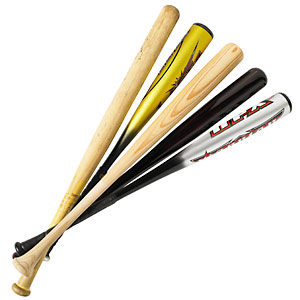 bats are made from various types of trees such as ash, maple, or birch and usually have a -3 weight drop.
bats are made from various types of trees such as ash, maple, or birch and usually have a -3 weight drop.
Metal bats are either alloy (aluminum) or composite. Aluminum bats are typically cheaper, last longer, and have a smaller sweet spot than composite bats. Composite bats have a more prominent sweet spot, which can cause less of a stinging feeling, but have a break-in period of 150-200 hits and tend to be more expensive.
Still have questions about which bat material is right for you? We have an extensive guide on the different bat material types here.
Bat Size Chart
Of course, sometimes it’s just not possible to feel and test a bat in person, like when ordering online or through a catalog. One of the simplest ways to size a bat is by using a baseball bat size chart.
This type of chart plots a player's height and weight to determine the correctly sized bat for them. It makes an excellent option for when you can't test and feel out the bat in person.
One-Piece vs. Two-Piece Bats
A final factor to consider when purchasing a baseball bat is one-piece vs. two-piece bats. A one-piece bat is made out of one continuous piece of metal and allows for little to no energy loss, and is more weight balanced than two-piece bats. The trade-off is that one-piece bats tend to give players a sting when the ball is mishit, which can be uncomfortable.
Two-piece bats are made by fusing the barrel and the grip of the bat. The result is that the player gets more of a "whipping" sensation when swinging the bat. This allows for faster bat speeds and can also reduce the stinging feeling if a ball is mishit.
Final Thoughts
There is so much to consider when purchasing a bat, and since bats can cost upwards of $300, you want to make sure that you are making the right choice. While this guide can help point any player in the right direction in terms of the dimensions and measurements of a bat, it is also essential to consider the player's individual preferences and feel when choosing a bat.
Always make sure to test a bat out in the store before purchasing it when possible, and of course, try any new bat out in practice before making your first plate appearance in a game.
If you are looking for suggestions on specific bats to purchase, check out our reviews page for insight on a variety of different bats.


